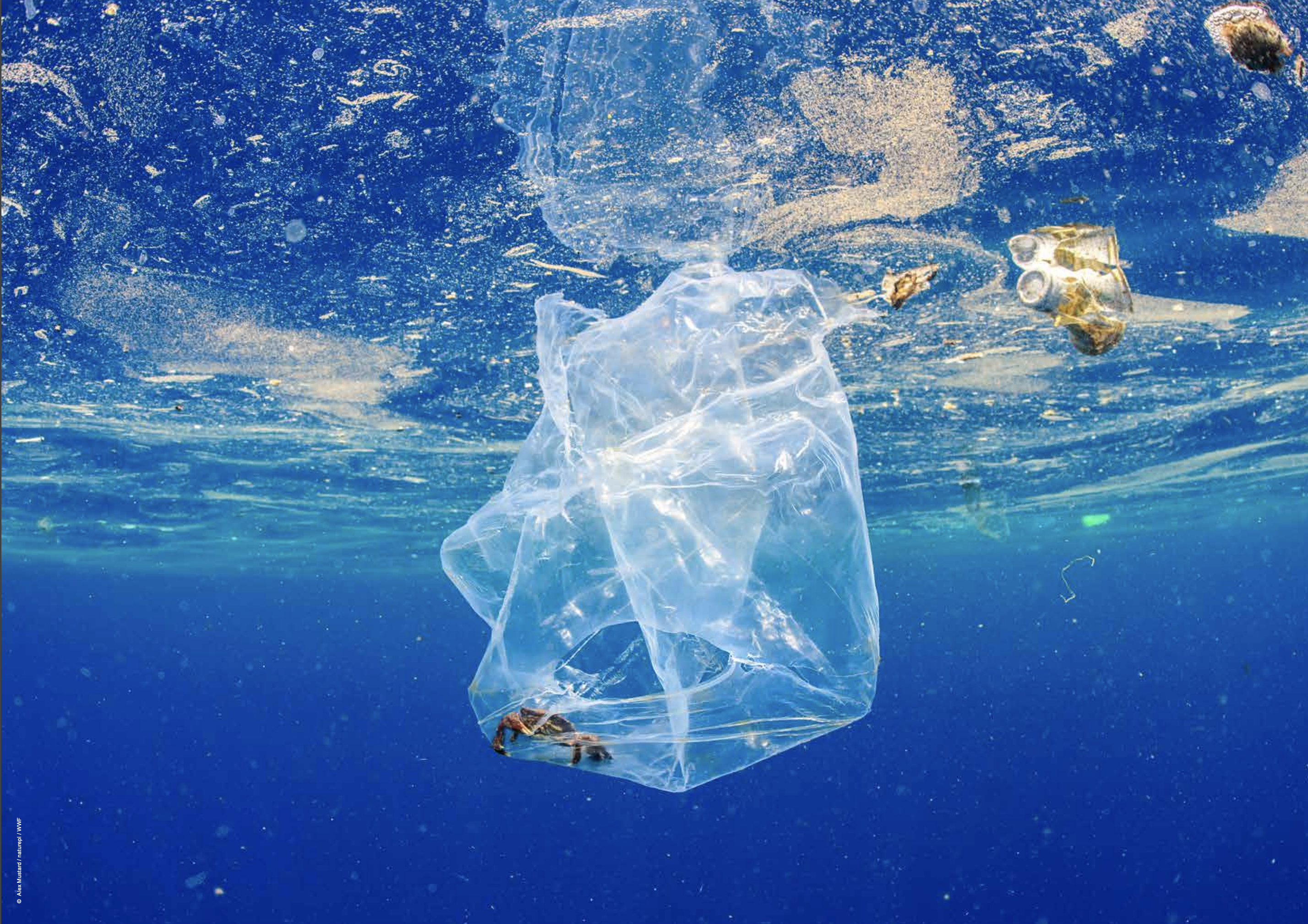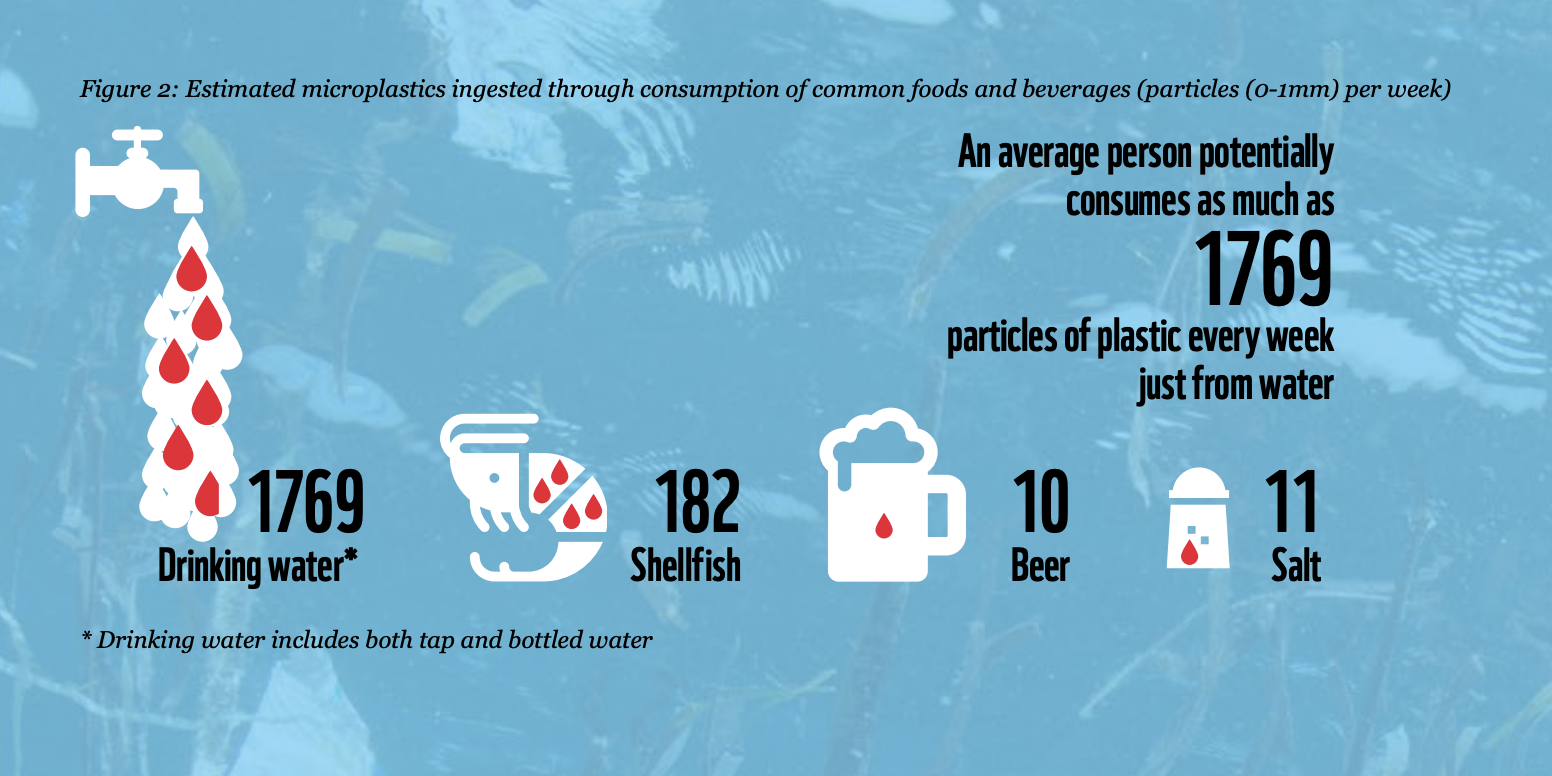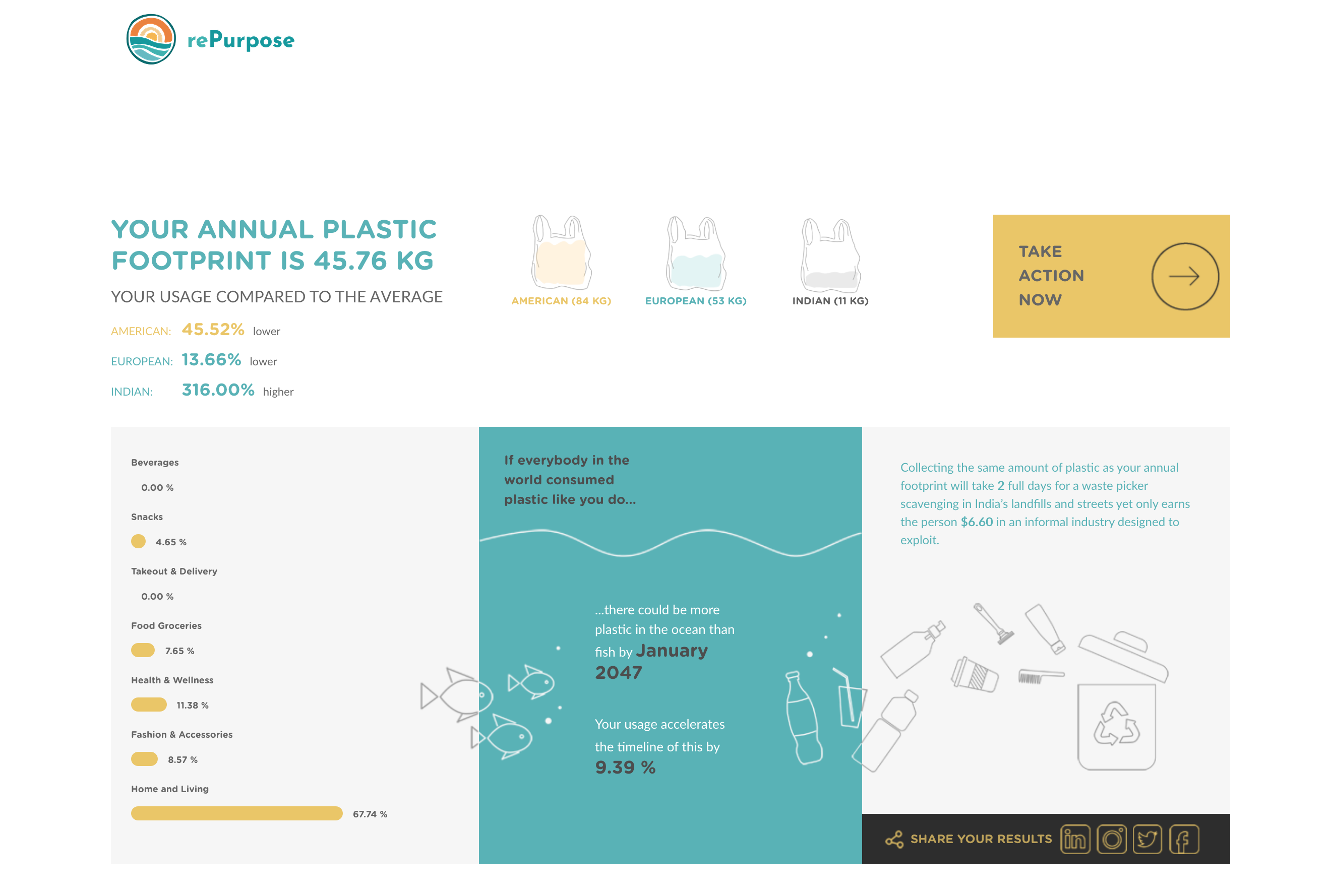
Source: WWF || Alex Mustard
For years we have known that plastic pollution and microplastics are killing the World’s marine life. In 2015, the concern for aquatic life became so widespread that President Obama banned microbeads in the United States. Microbeads are tiny plastic beads that were commonly found in beauty products (think exfoliators and toothpaste). Unfortunately, microbeads are just the tip of the iceberg. Far more microplastics come from from synthetic fibers in our clothes and bigger pieces of plastic breaking down, and they are being found everywhere on the planet from the Arctic Ocean to the top of the Rocky Mountains to lakes, to atmosphere of all our cities. Such pervasiveness means microplastics affect not only our planet’s oceans but also us. Today, studies show that the average person consumes a credit card’s worth of plastic in a week. Imagine eating fifty-two credit cards every year.
What are microplastics?
Microplastics are not a particular type of plastic but are instead defined as any plastic that is under 5 millimeters. 5 mm is approximately the size of a pencil eraser, but it can also be anything under. Plastic never truly breaks down. As plastic bags, bottles, utensils, straws, and other items undergo environmental stressors, they break down into smaller particles until they eventually are not visible to the naked eye, yet they are always there. Similar to a boulder eroding until it becomes sand. The other type of microplastic is intentionally small plastic pieces. These are microbeads, clothing threads, and plastic pellets.
Plastic is polluting the air we breathe, the water we drink and the food we eat

Source: WWF || Plastic Ingestion Study
A new study done by the University of Newcastle, Australia, found that the average person ingests approximately 5 grams of microplastics a week, which is the equivalent of a credit card. We have known that plastic negatively impacts marine life for a while now, but the study shines a light on how this epidemic is also devastating land wildlife and humans. When animals ingest these plastics, and later humans eat the animals, they end up consuming toxic plastic waste. While there is much still to be researched, current studies have identified health risks such as sexual dysfunction, infertility, an increase in genetic mutations, and cancers. If like me, you’re a vegan, you’re probably reading this and thinking, “thank goodness, I don’t eat animals, so I’m not consuming plastic.” Well, unfortunately, that’s where we were both wrong. The vast majority of plastic we ingest is from our water. There is almost ten times more plastic in our drinking water than in shellfish.
What can we do?

Source: RePurpose || My personal plastic footprint, still a long way to go!
Of course, after reading the WWF study, I wanted to make sure I wasn’t drinking plastic contaminated water, so I tried to look for filters that remove microplastics. I was able to find two that claimed they did so. Lifestraw is a filtration system that’s great for on-the-go, and TAAP Water is good for attaching to your at-home water sources. Let me know if you guys know of any other systems, it would be great to find a zero-waste one! However, the first step in reducing microplastics is to remove it from the water by reducing our everyday plastic usage. Plastic is all around us. Our drinks, food, make-up, toiletries, and clothing come packaged in it. Find out your plastic footprint by using rePurpose’s plastic calculator. A simple start is to avoid single-use plastics. That is any plastic items that are disposable after just one use. Such as plastic utensils, coffee cups/lids, water bottles, take-out containers, and straws. We live in a plastic world. It’s time to fix that.
Also by Iga: What Actually Was Achieved By The UN Climate Summit? The Good, The Bad, The Ugly
Amazon Just Announced A Major Climate Pledge. But Why It’s Not Enough To Convince Us
Get more like this—Subscribe to our daily inspirational newsletter for exclusive content!




